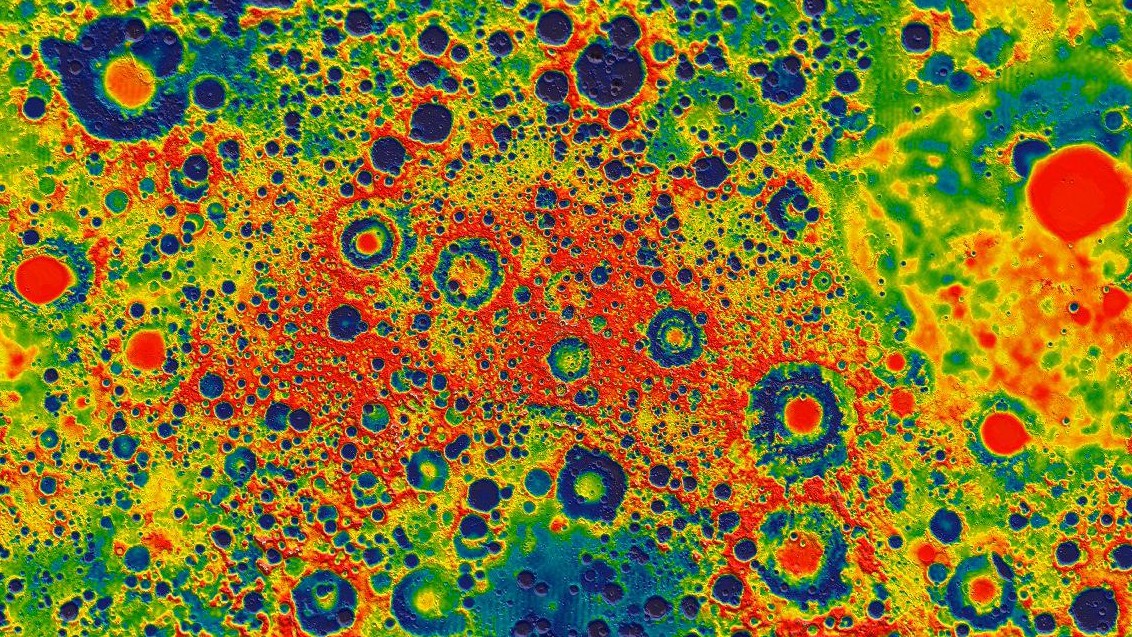Scientists discover huge, heat-emitting blob on the far side of the moon
Scientists detected a peculiar blob of heat-emitting material buried on the far side of the moon. The most likely culprit is a rock that is very rare outside of Earth.

Scientists have discovered an anomalous blob of heat on the far side of the moon.
This mysterious hotspot has a strange origin: It's likely caused by the natural radiation emanating from a huge buried mass of granite, which is rarely found in large quantities outside of Earth, according to new research. On the moon, a dead volcano that hasn't erupted for 3.5 billion years is likely the source of this unusual hunk of granite.
"This is more Earth-like than we had imagined can be produced on the Moon, which lacks the water and plate tectonics that help granites form on Earth," lead study author Matt Siegler of the Planetary Science Institute in Tucson, Arizona, said in a statement.
Siegler and his colleague Rita Economos of Southern Methodist University discovered the heat with a new method using microwaves to measure subsurface temperatures via the Chinese lunar orbiters Chang'E 1 and 2. They also used data from NASA's Lunar Prospector and Lunar Reconnaissance Orbiters.
What they found was an area about 31 miles (50 kilometers) across where the temperature is about 18 degrees Fahrenheit (10 degrees Celsius) warmer than the surroundings. This region was below a 12.4 mile (20 km) diameter spot on the surface that is rich in silicon and that is thought to be a collapsed volcanic crater. The dead volcano last erupted 3.5 billion years ago, but magma from its plumbing system is likely still sitting below the surface, giving off radiation.
"This find is a 50 km-wide batholith; a batholith is a type of volcanic rock that forms when lava rises into the Earth's crust but does not erupt onto the surface," Economos said in the statement. "El Capitan and Half Dome, in Yosemite in California are examples of similar granite rocks which have risen to the surface."
The researchers reported their initial findings in the journal Nature on July 5 and presented additional details July 12 at the Goldschmidt Conference on geochemistry in Lyon, France.
Get the world’s most fascinating discoveries delivered straight to your inbox.
The findings are "incredibly interesting," Stephen M. Elardo, a geochemist at the University of Florida who was not involved in the study, said in the statement. Granite is extremely common on Earth, but not elsewhere in the solar system, added Elardo.
"People don’t think twice about having a granite countertop in their kitchen," he said. "But geologically-speaking, it’s quite hard to make granite without water and plate tectonics, which is why we really don’t see that type of rock on other planets. So if this finding by Siegler and colleagues holds up, it’s going to be massively important for how we think about the internal workings of other rocky bodies in the Solar System."

Stephanie Pappas is a contributing writer for Live Science, covering topics ranging from geoscience to archaeology to the human brain and behavior. She was previously a senior writer for Live Science but is now a freelancer based in Denver, Colorado, and regularly contributes to Scientific American and The Monitor, the monthly magazine of the American Psychological Association. Stephanie received a bachelor's degree in psychology from the University of South Carolina and a graduate certificate in science communication from the University of California, Santa Cruz.


